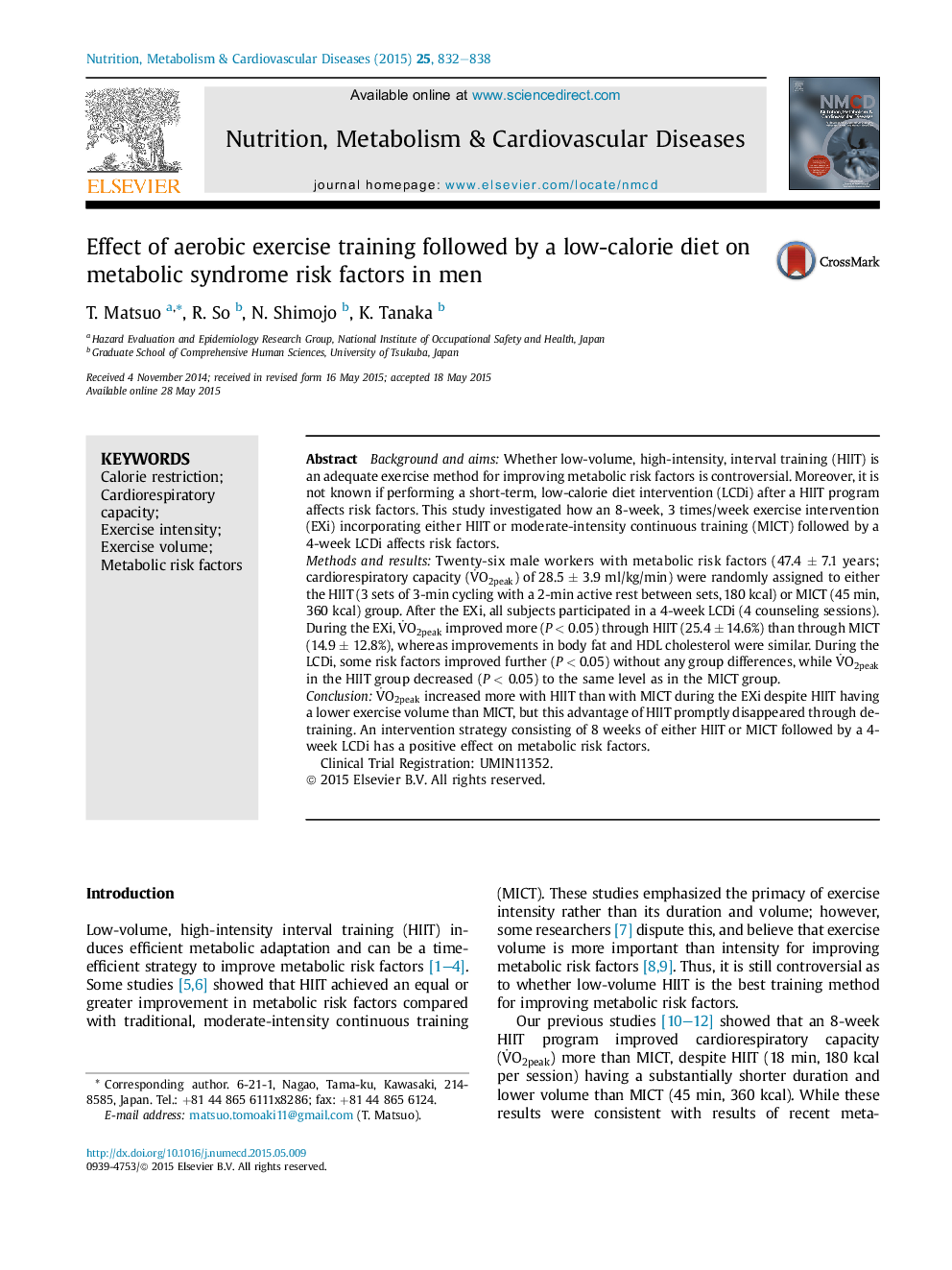| کد مقاله | کد نشریه | سال انتشار | مقاله انگلیسی | نسخه تمام متن |
|---|---|---|---|---|
| 5996477 | 1180673 | 2015 | 7 صفحه PDF | دانلود رایگان |
- Exercise intensity rather than volume had a greater role in increasing VËO2peak.
- Increased VËO2peak from low-volume training decreased rapidly through detraining.
- Aerobic interval exercise improved HDL cholesterol even with a low volume of exercise.
- Exercise for 8 weeks followed by 4 weeks of low-calorie diet improved risk factors.
Background and aimsWhether low-volume, high-intensity, interval training (HIIT) is an adequate exercise method for improving metabolic risk factors is controversial. Moreover, it is not known if performing a short-term, low-calorie diet intervention (LCDi) after a HIIT program affects risk factors. This study investigated how an 8-week, 3 times/week exercise intervention (EXi) incorporating either HIIT or moderate-intensity continuous training (MICT) followed by a 4-week LCDi affects risk factors.Methods and resultsTwenty-six male workers with metabolic risk factors (47.4 ± 7.1 years; cardiorespiratory capacity (VËO2peak) of 28.5 ± 3.9 ml/kg/min) were randomly assigned to either the HIIT (3 sets of 3-min cycling with a 2-min active rest between sets, 180 kcal) or MICT (45 min, 360 kcal) group. After the EXi, all subjects participated in a 4-week LCDi (4 counseling sessions). During the EXi, VËO2peak improved more (P < 0.05) through HIIT (25.4 ± 14.6%) than through MICT (14.9 ± 12.8%), whereas improvements in body fat and HDL cholesterol were similar. During the LCDi, some risk factors improved further (P < 0.05) without any group differences, while VËO2peak in the HIIT group decreased (P < 0.05) to the same level as in the MICT group.ConclusionVËO2peak increased more with HIIT than with MICT during the EXi despite HIIT having a lower exercise volume than MICT, but this advantage of HIIT promptly disappeared through detraining. An intervention strategy consisting of 8 weeks of either HIIT or MICT followed by a 4-week LCDi has a positive effect on metabolic risk factors.Clinical Trial Registration: UMIN11352.
Journal: Nutrition, Metabolism and Cardiovascular Diseases - Volume 25, Issue 9, September 2015, Pages 832-838
